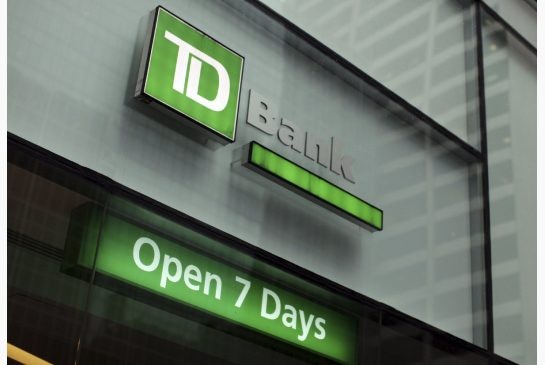Mortgage rates edge higher
Post on: 16 Март, 2015 No Comment

SteveKerch
CHICAGO (CBS.MW) — After a one-week pause, U.S. mortgage rates resumed their climb in the week ending Aug. 22, although the increase was slight, Freddie Mac said Thursday.
The benchmark 30-year, fixed-rate mortgage edged up to 6.28 percent from 6.24 percent a week earlier, when it had dropped for the first time in eight weeks.
The hikes in nine of the last 10 weeks have brought the loan up from a modern-day low of 5.21 percent on June 12. Still, the 30-year rate is right where it was this time a year ago, when it averaged 6.27 percent.
The average for a 15-year fixed-rate loan rose to 5.6 percent from last week’s average of 5.58 percent. A year ago, the 15-year mortgage averaged 5.71 percent.
One-year Treasury-indexed adjustable-rate mortgages averaged 3.84 percent, up from 3.75 percent. At this time last year, the one-year ARM averaged 4.34 percent.
The 30- and 15-year loans required the payment of an average 0.8 points to achieve the rate, while the ARM needed 0.7 points. A point is one percent of the loan amount, charged as prepaid interest.
Mortgage activity stalls
Mortgage activity fell nearly 11 percent in the week ended Aug. 15, the Mortgage Bankers Association of America reported, leaving it at the lowest level seen in more than a year. But the decline was likely exacerbated by the blackout in the eastern United States at the end of the week, economists said.
The MBA’s seasonally adjusted index measuring purchase-loan activity decreased by 4.9 percent to a reading of 389.5 from 409.6 the previous week. The seasonally adjusted refinance index decreased by 14.9 percent to 2756.8 from 3238.4.
One factor that no doubt negatively affected mortgage applications last week was the blackout in the Northeast that shut down many mortgage offices for at least a day. Unfortunately, the nature of our data is such that we cannot estimate the magnitude of the impact, said Jay Brinkmann, MBA’s vice president of research and economics.
The refinance share of mortgage activity decreased to 53.4 percent of total applications, down from 55.8 percent the previous week. The adjustable-rate mortgage share of activity increased to 23.3 percent from 22.5 percent the previous week.
The drop in refinancing activity is forcing housing economists to rethink their projections for mortgage originations this year. The MBA this week said it’s now forecasting $3.2 trillion in mortgage originations for 2003 and $1.5 trillion for 2004, down from a previous forecast of $3.4 trillion and $1.9 trillion, respectively.
The drop in MBA’s forecast is entirely due to a decline in mortgages to refinance homes. MBA estimates that mortgages obtained to refinance homes will total $2.1 trillion in 2003, 8 percent less than previously estimated. In 2004, refinancings will likely add up to only $430 billion, sharply lower than MBA’s previous estimate of $833 billion.
Fannie sees refi downturn
MBA’s estimate of mortgages made for the purpose of purchasing a home remains at $1.08 trillion in 2003 and $1.11 trillion in 2004.
Mortgage agency Fannie Mae FNM, -0.62% has also revised its outlook, lowering its projection of mortgage originations to around $3.4 trillion for 2003 — still an all-time high. In addition, Fannie Mae has reduced its forecast for 2004 originations to about $1.5 trillion — with the entire decline coming from significantly reduced refinance activity.

Refi originations should rise to a record $2.3 trillion this year, but refi activity next year is expected to fall all the way to $400 billion — the lowest figure since 2000.
We have been forecasting mortgage interest rates to slowly increase, eventually drying up the refinance market, but the recent upsurge in rates has moved that event forward, said Douglas Duncan, MBA’s chief economist.
Rates have risen dramatically for several reasons, the most important being the expectations of rapid growth beginning in the third quarter and changes in investment strategies. The 10-year Treasury bond rate has risen 134 basis points since mid-June, and mortgage rates followed suit, Duncan said.
We expect, however, that rates will back down from recent highs because current levels are not in line with economic fundamentals. Rates will then move up slowly through 2004.
The average interest rate for 30-year fixed-rate mortgages in the MBA survey increased to 6.22 percent from 6.00 percent one week earlier, with points including the origination fee increasing to 1.50 from 1.37 for 80 percent loan-to-value ratio loans. The MBA survey covers about 40 percent of the U.S. mortgage market.
‘Outstanding year’
The recent upswing in mortgage rates does not seem to have slowed the new home construction market, if July’s housing starts figures are any indication, said Frank Nothaft, Freddie Mac chief economist. Total starts hit a 17-year high in July, while single-family starts in the same month were the at the highest level since 1978.
Even as mortgage rates continued to climb in August, builder confidence reached its highest level in three and one half years, according to the National Association of Home Builders. This would seem to indicate that 2003 will continue to be an outstanding year for the housing industry, Nothaft said.














